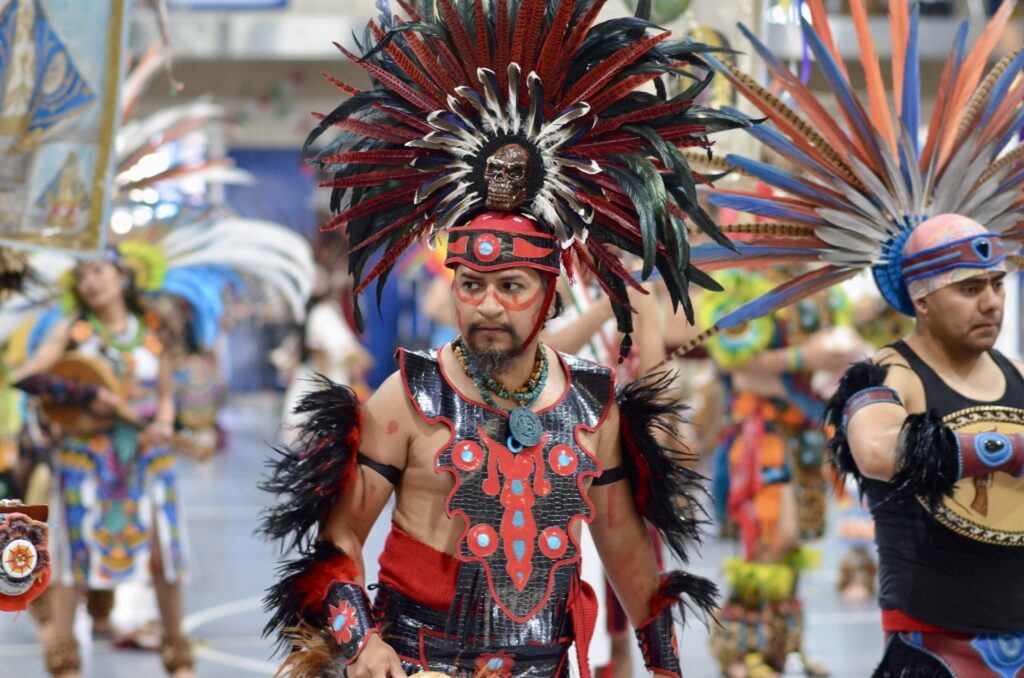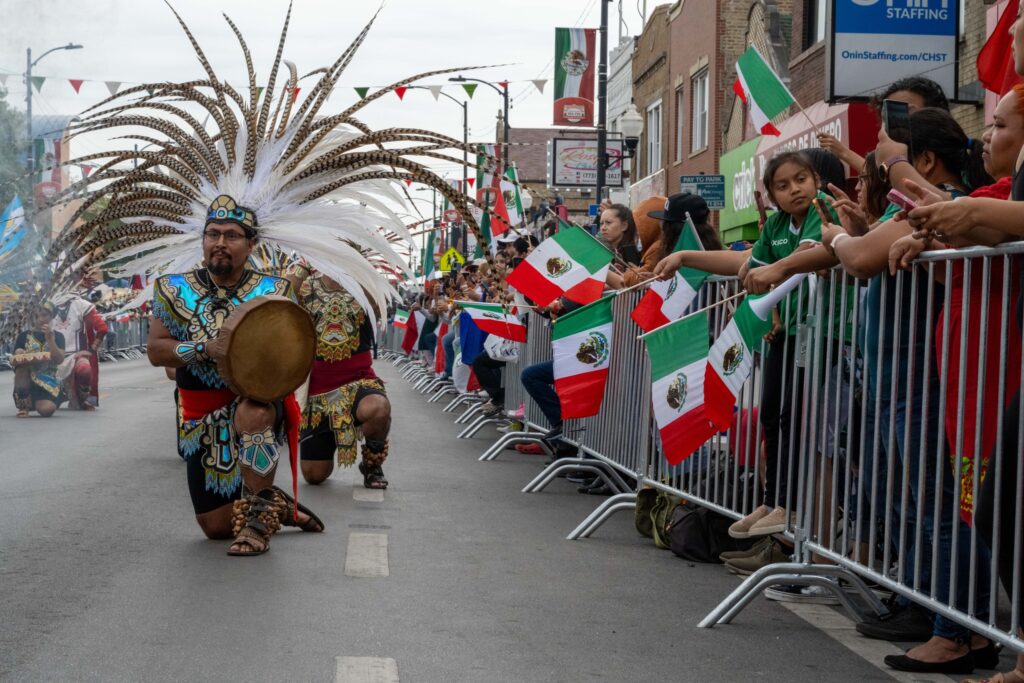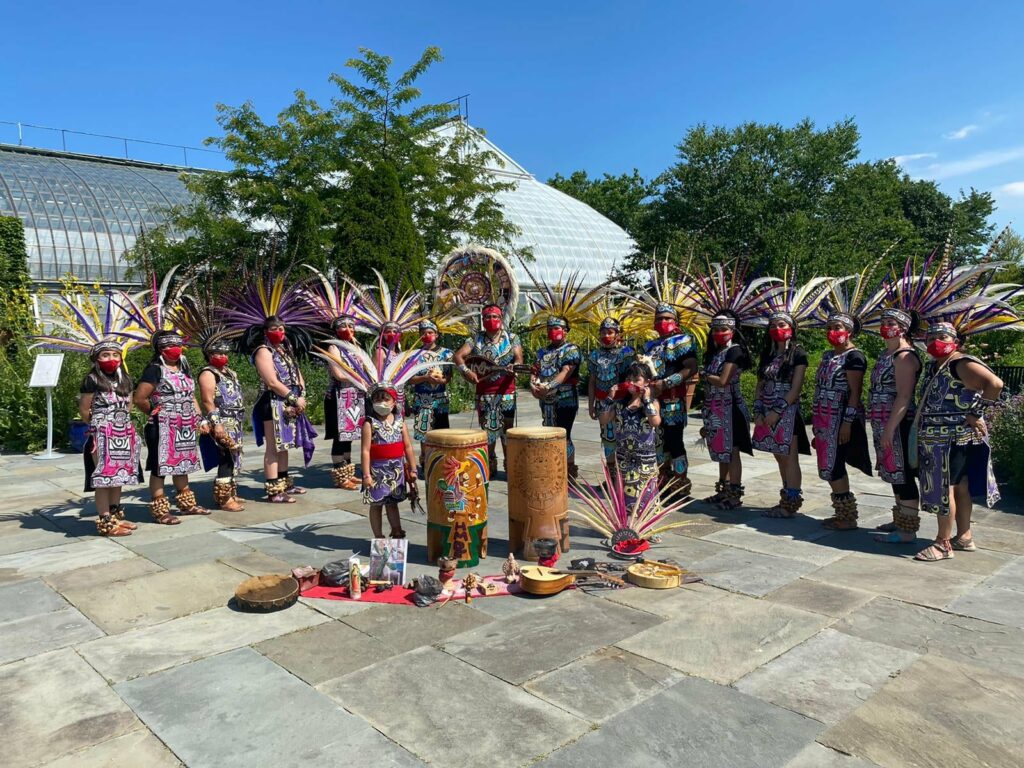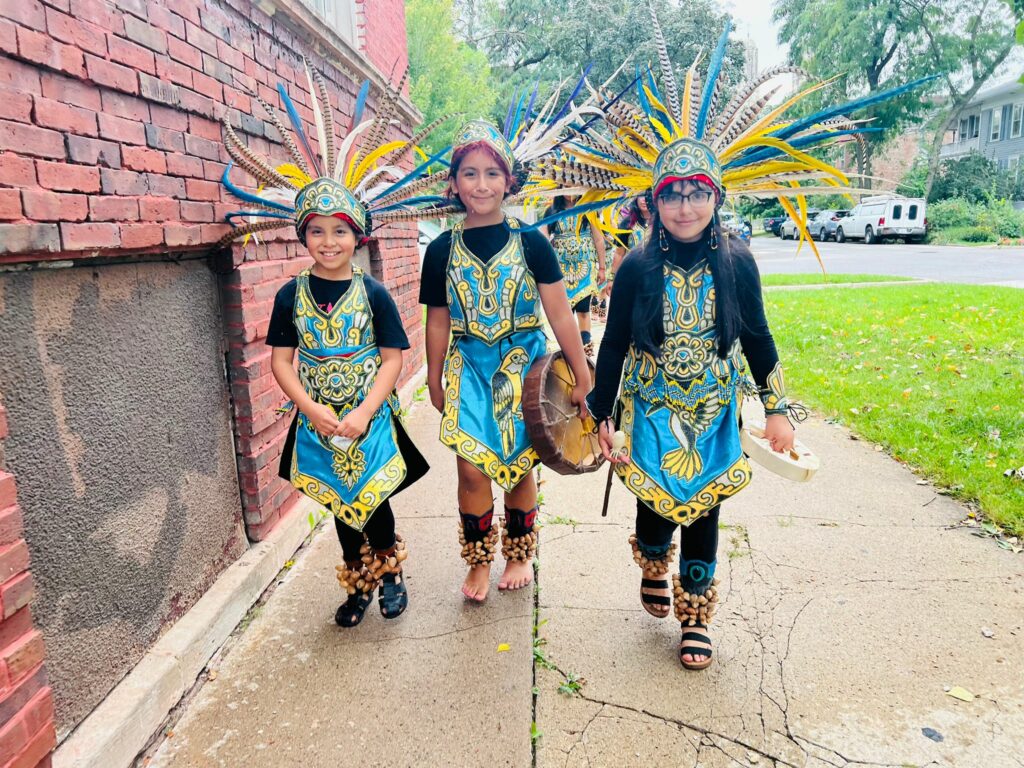An Aztec dance group from Chicago’s South Side was bestowed recognition from fellow national and international danza groups in a public ceremony this summer at St. Agnes Church where a lifelong leader of the group, a chief, was also ordained.
Little Village-born Henry Cervantes, thirty-six, was raised Catholic by his Mexican parents from Iguala, Guerrero, and as an adult his spiritual identity began to evolve. Shortly after the death of his mentor and dance chief, Jorge Nieto, ten years ago, he followed in his steps and founded the local danza group Xochitl-Quetzal.
Danza is a Spanish word that encompasses not only its literal verb, dance, but also the spiritual songs, rituals, prayers, and symbolism that go back about five centuries to Indigenous and colonial Mexico. Cervantes said he traveled to the homeland on repeated occasions to witness and learn the ceremonies.
“For the past four years, the elders prepared me and our dancers because it is a life commitment. When somebody becomes a chief, you become married to the culture so that it doesn’t die,” Cervantes told the Weekly.
Ensuring the survival of ancient traditions is the core responsibility of the chief or capitán. When in 1521, the Aztec capital Tenochtitlan—modern-day Mexico City—collapsed under the Spanish invasion, with it came the coercion and punishment of Native people who attempted to practice their languages, religions, and customs. The stigma continued for generations.
Danza azteca, also known as danza mexica, is the amalgamation of physical and spiritual expressions that outlived colonization. “It’s a responsibility,” Cervantes said. “And it’s a direct way of serving the people—something as precious as what survived the colonization and things that are not supposed to exist anymore.”
“The whole point of the conquest was to defeat the Indigenous. That was the whole point. The whole point of destroying codexes (sacred books), the whole point of destroying the temples, that was the point, to destroy [evidence] that any history resisted here.”
In many cases, ancient elements were able to persist under the guise of Catholicism, a phenomenon now understood as religious syncretism. As pyramids and sacred places were destroyed and churches built on top with Indian labor, old practices were secretly embedded into the new physical and religious landscape.
“What very little we have in terms of songs, in terms of dance, in terms of what we call palabra, it’s precious that it’s still around after 500 years. That the children that we’re teaching these ways to have the exact same steps that were danced, not just 500 years ago, but prior to those 500 years,” Cervantes said.
Each recognized danza group is commonly referred to as a mesa and assigned a patron saint. The saint is usually the Christian version, so to speak, of an indigenous deity, like Tonantzin, Tlaloc, or Mayahuel. In Mexico, many towns and villages have an annual festivity or procession for their local patron saint.
Santiago (St. James) is Xochitl-Quetzal’s patron saint, who is celebrated in various parts of Mexico every July 25. “The weight and the reason we picked that date is because it commemorates a battle, one of the last battles that took place between the Spanish colonizers and the Indigenous Chichimecas in northern Mexico, one of the last tribes to be defeated… That battle took place on July 25, 1531.”
Chiefs and elders from many groups attended Xochitl-Quetzal’s initiation in the Little Village church: from Mexico City, New York, California, Arizona, Texas, Minnesota, Florida, Pennsylvania, and North Carolina, among them. They played their traditional instruments, and prayed and danced together during the initiation ceremony, in what resembled a Native American powwow.
While most mesas use Native musical instruments like the huehuetl and teponaztli drums, whistles, flutes, and ayoyote rattles, Xochitl-Quetzal’s members also play small guitars made with armadillo shells or conchas—a sacred animal.
“We are known as concheros because we dance with these Mexican-made instruments that have the caparazón of an armadillo… So the Mexica dance evolved into the conchero dance. So that’s why we sing in Spanish and we sing in Nahuatl.”
Recognized danza groups like Xochitl-Quetzal each lift a processional banner called an estandarte that displays their corresponding saints and iconography, and in the back are the names of the group leaders past and present. One banner at the St. Agnes ceremony was 101 years old and had been handed down by three chiefs.
The group of roughly thirty-five members has weekly practices in La Villita Community Church and other churches in Little Village, Pilsen and Back of the Yards. They also give presentations in libraries and universities in and out of state.
Some of Xochitl-Quetzal’s most significant annual ceremonies are on November 1 and 2, commonly known as Day of the Dead, and on December 12 in honor of La Virgen de Guadalupe and in accordance with the Catholic liturgical calendar.
“Danza is not just something you do as a hobby,” Cervantes said. “It’s something that people gave their lives to back in the day so that people don’t remove your identity, your culture. Es de vida y muerte.”
Jacqueline Serrato is the Weekly’s editor-in-chief.








